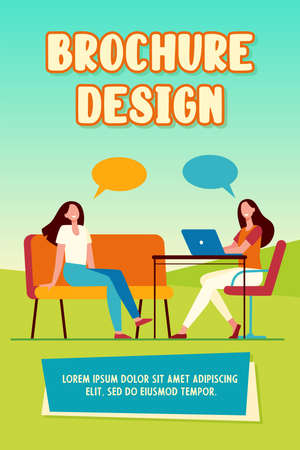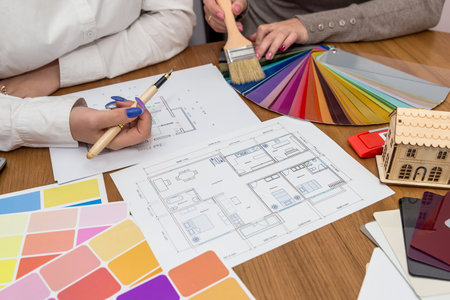Understanding Accessibility and Inclusivity in the UK Context
Accessible and inclusive interior design has become a critical focus within the United Kingdom, shaped by both legal requirements and evolving social attitudes. At the heart of this movement is the Equality Act 2010, a landmark piece of legislation that places clear responsibilities on organisations to ensure spaces are accessible for everyone, regardless of ability. This law not only addresses physical disabilities but also covers a wide spectrum of needs, including sensory and cognitive impairments. Complementing the Equality Act is BS 8300, the British Standard that offers comprehensive guidance on designing accessible environments for disabled people. These frameworks set out best practices for everything from door widths to signage and lighting, ensuring that all users can navigate and enjoy interiors with dignity and independence.
The cultural significance of accessible and inclusive design in the UK goes beyond compliance. It reflects a broader societal commitment to equality, community integration, and social responsibility. As awareness grows around neurodiversity, ageing populations, and hidden disabilities, designers are increasingly called upon to create spaces that offer flexibility and comfort to all users. This shift is visible in public buildings, workplaces, hospitality venues, and homes across the country, where thoughtful details—such as step-free entrances, clear wayfinding systems, contrasting colour schemes, and adaptable furniture—are becoming standard features rather than afterthoughts. In summary, accessibility and inclusivity are not just regulatory obligations; they are integral to delivering interiors that truly serve the diverse needs of today’s UK society.
2. Professional Approaches to Accessible Interior Design
In the UK, professional approaches to accessible and inclusive interior design are guided by a robust framework of best practices and standards, ensuring that environments are welcoming to all users, regardless of ability. The Royal Institute of British Architects (RIBA) and the British Institute of Interior Design (BIID) provide key guidance on integrating accessibility from the earliest stages of project development.
Best Practices in Accessible Design
Successful accessible interiors begin with a clear understanding of user needs. Professionals prioritise consultation with end-users, occupational therapists, and access consultants during initial planning. This collaborative process ensures that both visible and invisible disabilities are considered, leading to design solutions that foster independence and dignity.
Guidance from RIBA and BIID
Both RIBA and BIID recommend embedding accessibility into every phase of the design process. Their guidelines emphasise:
- Compliance with Approved Document M and BS 8300 standards
- Inclusive spatial planning, including appropriate circulation spaces
- Specification of materials and finishes that support ease of use
- Use of contrasting colours for wayfinding and safety
- Flexible furniture arrangements for multi-functional spaces
Planning Processes for Accessibility
The planning process typically follows a structured approach, as shown below:
| Stage | Description | Accessibility Considerations |
|---|---|---|
| Brief Development | Gathering requirements from stakeholders | User consultation; identifying specific access needs |
| Concept Design | Initial spatial layouts and design ideas | Zoning for step-free access; accessible routes planned in early sketches |
| Detailed Design | Refining plans, selecting materials and fittings | Specifying tactile surfaces; choosing lever handles over knobs |
| Tender & Construction | Selecting contractors, building works commence | Ensuring contractors understand access specifications; site inspections for compliance |
| Completion & Handover | Final checks and handover to client/user | User training; feedback on accessibility features; post-occupancy evaluation |
The Importance of Early Integration
A key principle advocated by UK professionals is integrating accessibility at the inception of every project. Retrofitting accessible features later can be costly and disruptive, whereas early consideration ensures seamless inclusion. This approach not only meets legal obligations under the Equality Act 2010 but also delivers environments that genuinely enhance quality of life for everyone.

3. Case Study: Accessible Residential Interiors
Overview of the Adapted UK Home
This case study focuses on a semi-detached house in Greater Manchester that has undergone a series of thoughtful adaptations to meet the needs of a wheelchair user. The project showcases how professional interior designers and occupational therapists collaborate with homeowners to deliver both accessibility and comfort, reflecting best practice in the UK.
Practical Modifications Implemented
Ramped Entrances and Level Thresholds
The original step at the front entrance was replaced with a gently sloped concrete ramp, finished with non-slip surfacing suitable for British weather conditions. This ensures safe access regardless of rain or frost. Internal thresholds were also levelled throughout the ground floor to allow seamless movement between rooms.
Wider Doorways and Circulation Spaces
All ground floor doorways were widened to a minimum of 900mm, adhering to UK Building Regulations Part M. This modification allows easy passage for wheelchairs and mobility aids, while also benefiting visitors with prams or walking frames.
Accessible Kitchen Design
The kitchen was reimagined with lower worktops, pull-out shelves, and lever-style taps. Appliances were chosen for their side-opening doors and controls positioned within easy reach from a seated position. Contrasting colour schemes between units and work surfaces improve visibility for residents with visual impairments.
Bespoke Bathroom Adaptations
The bathroom was transformed into a wet room, eliminating trip hazards by removing the bath and installing slip-resistant flooring. A fold-down shower seat, grab rails, and an accessible basin enable safe independent use. The door opens outwards to maximise internal space, complying with inclusive design principles endorsed by leading UK charities such as Scope and Habinteg.
Conclusion
This case study demonstrates how small but strategic interventions can significantly improve the accessibility and inclusivity of residential interiors in the UK. These modifications not only support independent living but also enhance comfort for all household members and guests, setting an example for future domestic projects across Britain.
4. Case Study: Inclusive Public and Commercial Spaces
Across the UK, there has been a growing emphasis on ensuring that public and commercial interiors are accessible and inclusive for everyone, regardless of physical ability, age, or sensory needs. This commitment is visible in numerous high-profile projects where design solutions go beyond compliance to deliver truly welcoming environments.
UK Examples of Accessible Design
Let’s consider several real-world case studies that demonstrate best practices:
| Location | Type | Key Inclusive Features |
|---|---|---|
| Birmingham Central Library | Public Library | Step-free entrances, tactile signage, hearing loops, adjustable lighting zones, accessible toilets on every floor |
| The Crystal, London | Commercial Office & Exhibition Space | Wide automatic doors, dual-height reception desks, visual alarms for fire safety, wheelchair-accessible routes throughout |
| John Lewis, Oxford Street, London | Retail Space | Changing places toilet facilities, clearly marked wayfinding with large font signage, lowered counters at tills, quiet shopping hours for neurodiverse customers |
User-Centred Approaches in Practice
These spaces were developed through extensive consultation with diverse user groups—including people with disabilities, elderly individuals, and families with young children. The feedback loop enabled designers to address practical challenges such as:
- Circulation: Ensuring wide corridors and smooth flooring for wheelchair users and pushchairs.
- Sensory Considerations: Incorporating acoustic panels to reduce noise levels and using colour contrasts for better visibility.
- Signage: Employing Braille and raised lettering alongside pictograms for universal understanding.
- Rest Facilities: Providing accessible toilets and rest areas at regular intervals.
The Value of Ongoing Maintenance and Adaptation
An important aspect of these case studies is the commitment to regular maintenance. For example, checking door mechanisms remain easy to operate or ensuring tactile surfaces stay clear of obstructions. This proactive approach keeps spaces functional and safe for all users over time.
Conclusion: Setting a Standard for Inclusive Design in the UK
The highlighted projects showcase how British public and commercial interiors are leading the way in accessible design. By prioritising user feedback and robust maintenance schedules, these environments serve as benchmarks for future developments across the country.
5. Material and Product Selection for Inclusivity
Selecting the right materials and products is a cornerstone of accessible and inclusive interior design, particularly within the UK’s built environment. The process goes beyond aesthetic appeal, focusing on how surfaces, finishes, and fittings support sensory needs, long-term durability, ease of use, and ongoing maintenance—all in line with British Standards and best practice guidance.
Sensory Considerations
Designers should prioritise materials that cater to diverse sensory experiences. This means choosing finishes with low glare to aid those with visual impairments and selecting textures that are easy to distinguish by touch. Acoustic properties are also crucial; soft furnishings, acoustic panels, and carpets can reduce noise levels for neurodiverse individuals or those sensitive to sound.
Durability and Longevity
Public and commercial interiors in the UK must withstand high footfall and frequent use. Opt for robust materials such as high-quality laminates, safety flooring, or impact-resistant wall cladding. These choices ensure longevity while minimising disruption from repairs—an essential aspect of accessible environments where routine maintenance must not impede movement or access.
Ease of Use
Fixtures and fittings should be intuitive for all users. Lever handles are preferable to knobs as they require less dexterity, while contrasting colours on switches and sockets enhance visibility. Products should comply with BS 8300 standards, ensuring operability by people with varying physical abilities.
Cleaning and Maintenance
Easy-to-clean surfaces help maintain hygiene standards and reduce maintenance costs. Specify wipeable paints, stain-resistant fabrics, and non-porous worktops—especially in healthcare or educational settings. Clearly documented cleaning protocols can further support inclusivity by ensuring consistent upkeep without intrusive interventions.
Compliance with UK Standards
All material selections must meet UK regulatory requirements such as the Equality Act 2010 and relevant Building Regulations. Designers should consult guidelines like BS 9266 for accessible dwellings and engage with local authorities early in the specification process to confirm compliance.
Through thoughtful product selection that addresses sensory comfort, durability, usability, and maintainability—while adhering to established UK standards—interior designers create spaces that are genuinely accessible and inclusive for everyone.
6. User Participation and Community Consultation
In the context of accessible and inclusive interior design within the UK, engaging users and local communities is increasingly seen as a cornerstone of successful projects. Collaborative methods ensure that spaces are not only compliant with regulations but also genuinely meet the needs of those who use them daily. This approach aligns with both UK best practice and current legislation, such as the Equality Act 2010.
Engaging End Users from Concept to Completion
Professional designers now commonly involve end users—such as people with physical disabilities, sensory impairments, or neurodiverse conditions—at every stage of the project. Initial consultations may include focus groups, interviews, or workshops where participants can share their lived experiences and highlight specific barriers they encounter in public or private interiors. These insights directly inform decisions about layout, wayfinding, lighting, and materials.
Collaborating with Disability Advocates
Partnerships with disability advocacy groups offer valuable perspectives on both visible and hidden barriers. In many UK case studies, advocates have played an active role in reviewing plans, conducting site visits, and providing feedback during post-occupancy evaluations. Their expertise ensures that design choices not only adhere to British Standards (BS8300) but also reflect evolving best practices within the disability community.
Community Consultation for Local Relevance
Beyond individual users, consulting with broader local communities helps tailor interior environments to cultural expectations and demographic realities. Public consultations—whether through town hall meetings or digital surveys—allow residents to voice their priorities regarding accessibility features like hearing loops, dementia-friendly signage, or multi-faith reflection spaces. This participatory approach fosters a sense of ownership among community members and often leads to more sustainable outcomes.
Benefits of Inclusive Collaboration
By embedding user participation and community consultation into the design process, professionals can anticipate issues before they arise, minimise costly retrofits, and ultimately create interiors that are safe, welcoming, and functional for everyone. This ethos of collaboration is central to leading UK case studies in accessible design, demonstrating that real inclusivity goes far beyond minimum standards.
7. Maintaining and Adapting Accessible Interiors Over Time
Ensuring Long-Term Accessibility in UK Environments
Accessible and inclusive interior design is not a one-off project but an ongoing commitment. In the UK, long-term accessibility and safety require continuous maintenance and adaptation to meet evolving needs. Regular reviews of interiors ensure compliance with current legislation such as the Equality Act 2010 and British Standards like BS 8300. This proactive approach not only upholds legal responsibilities but also demonstrates respect for all users.
Strategies for Ongoing Maintenance
Scheduled Inspections and Routine Upkeep
Regular inspections are essential for identifying wear, damage, or potential hazards in accessible features—such as handrails, ramps, door mechanisms, and tactile surfaces. Scheduling maintenance checks ensures that issues are addressed promptly before they compromise safety or usability. Cleaning routines must also be mindful of non-slip finishes, contrasting surfaces, and clear signage to maintain optimal visibility and function.
Training and Staff Awareness
Facility managers and caretakers should receive training on the unique requirements of accessible interiors. This includes understanding emergency procedures for disabled persons, recognising signs of equipment failure, and reporting any barriers that may arise over time. Ongoing education helps sustain a culture of inclusivity within both public and private UK environments.
Adapting to Changing Needs
User Feedback Mechanisms
Engaging with building users—residents, employees, or visitors—offers invaluable insights into how well spaces meet their needs. Setting up feedback channels (such as suggestion boxes or digital surveys) allows continuous improvement and fosters trust among diverse user groups.
Flexible Design Solutions
The best accessible interiors are designed with adaptability in mind. Modular furniture, adjustable workstations, and demountable partitions allow environments to evolve as user requirements change due to age, health conditions, or new technology. Planning for future adaptations at the initial design stage reduces disruption and cost over the lifecycle of the space.
Ensuring Safety Through Compliance
UK regulations require periodic reviews of fire evacuation plans, emergency lighting, alarm systems, and accessible routes to ensure ongoing compliance with safety standards. Integrating these checks into regular maintenance schedules protects all users while maintaining the integrity of inclusive design strategies.
Conclusion: Commitment Beyond Installation
Sustaining accessible interiors in the UK demands vigilance, flexibility, and collaboration between designers, facilities teams, and end users. By prioritising routine maintenance, embracing adaptability, and maintaining open communication channels, organisations can ensure their spaces remain safe, welcoming, and truly inclusive for years to come.


